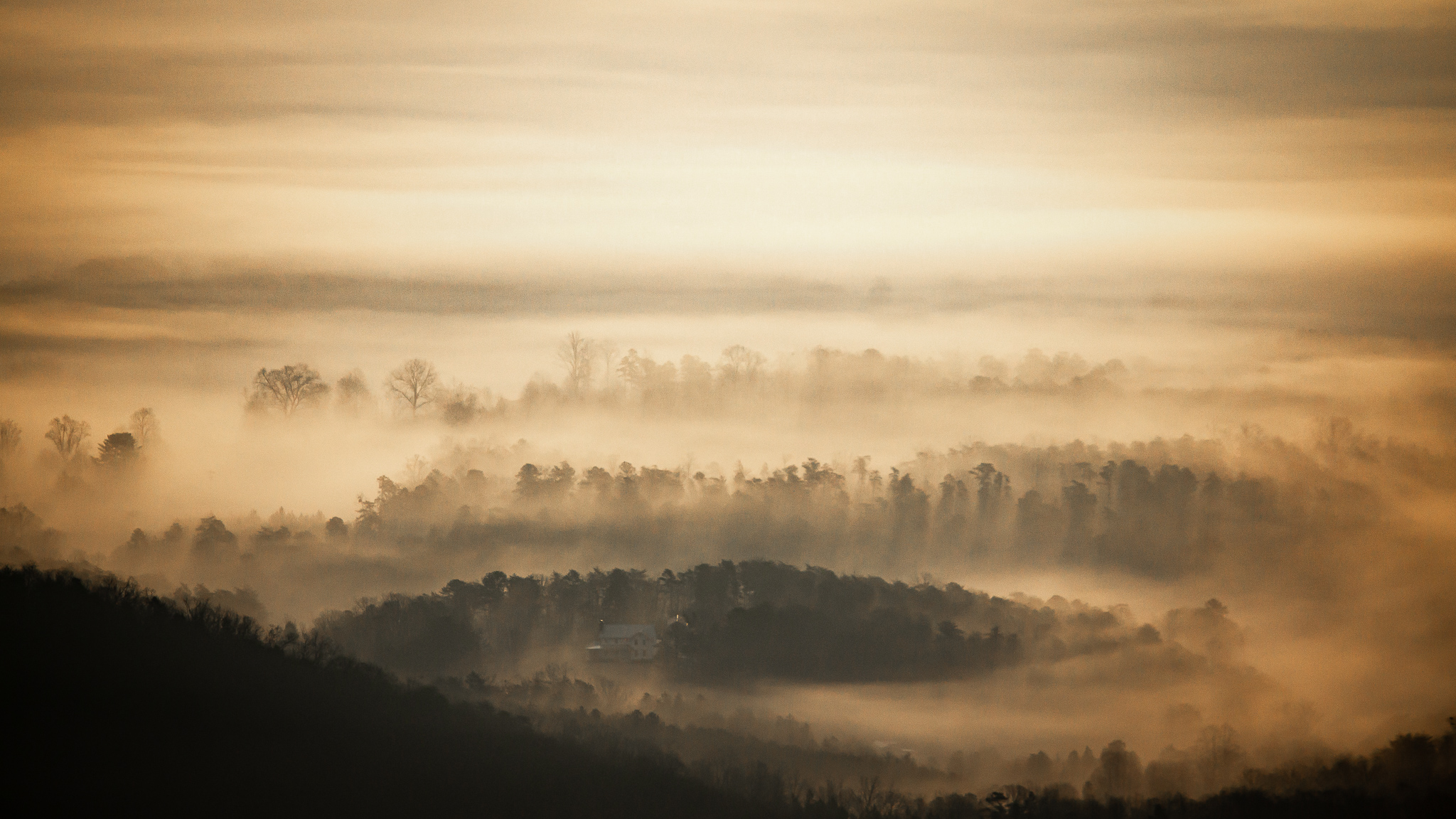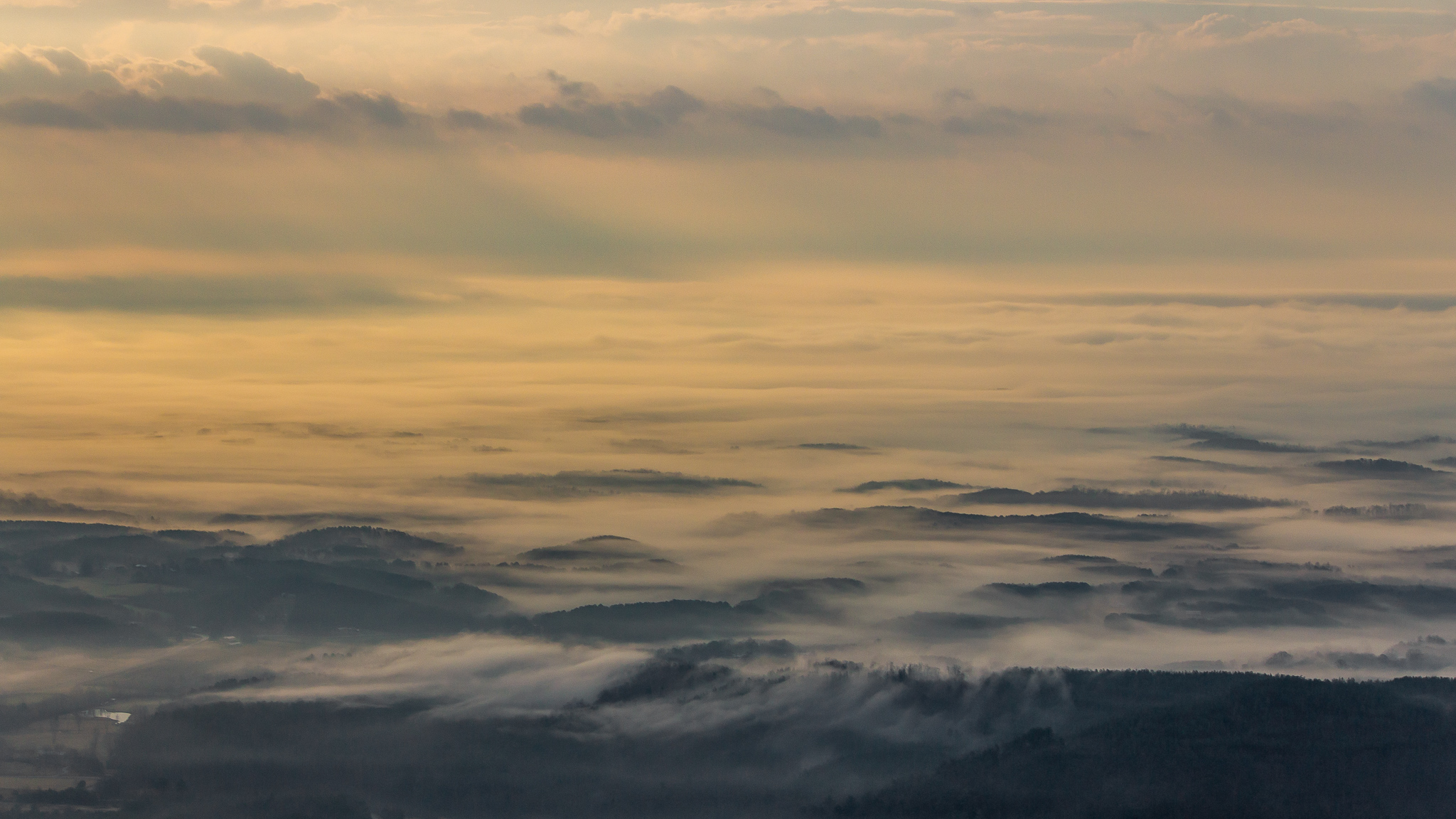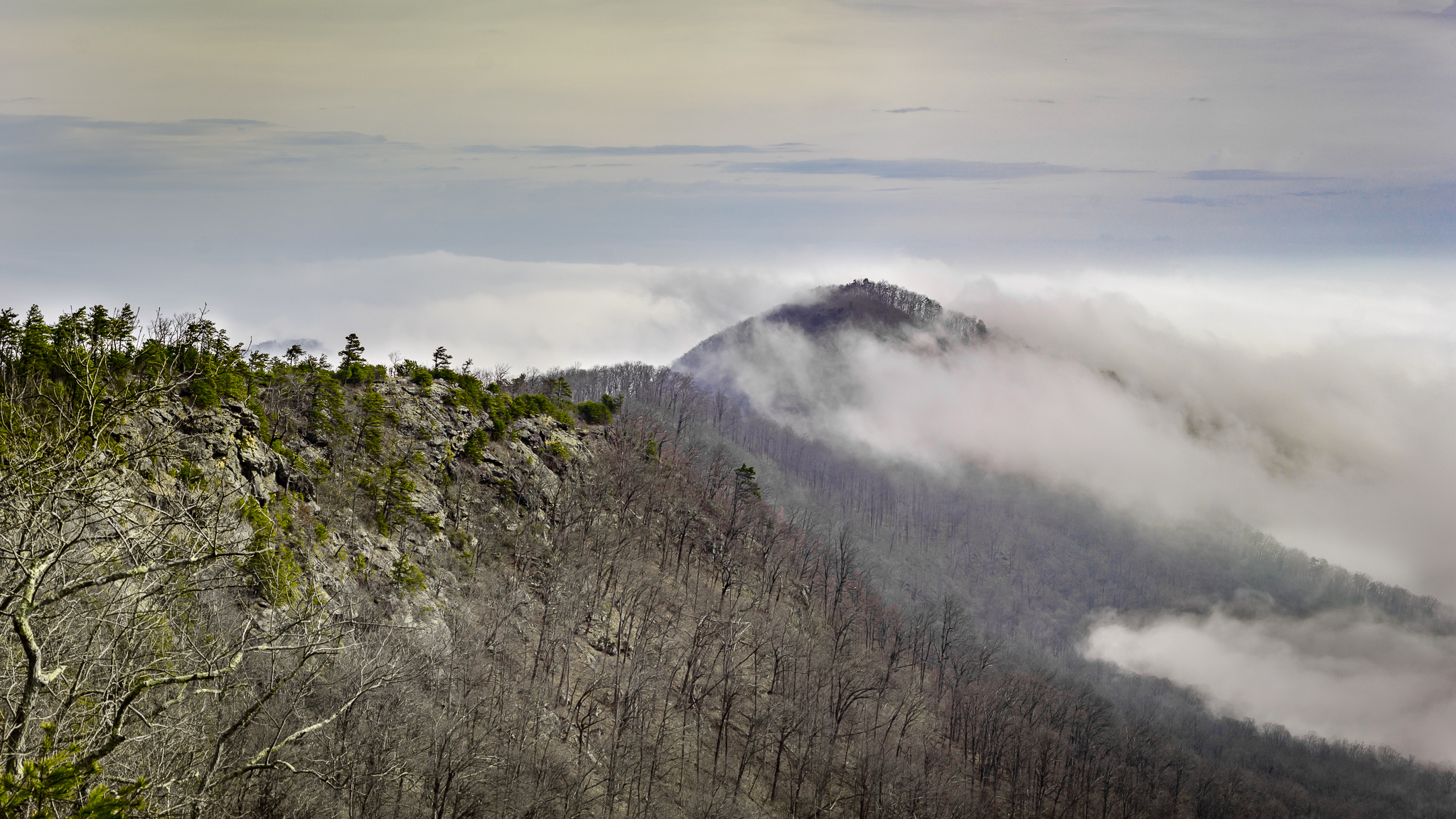February felt like an unending stretch of cold, cloudy days as many folks across the Carolinas were stuck beneath the dreaded “wedge”. Quasi-stationary high pressure over the Northeast drove a moist, low-level airmass up against the eastern side of the Southern Appalachians, and it just wouldn’t go away. If you felt like it was abnormally cloudy and rainy last month, you would most certainly be right. While each winter (and many summers) feature cold-air damming events, this February stood out as one of the dreariest in recent history.
There were some warm, sunny days, but you could probably count them on one hand. When compared to February 2020, average temperatures were a category lower this year, thanks in part to the persistent cloud cover. For a quick visual, check out the slider tool below to compare temperatures in February 2020 and 2021.
The last two days of February featured some wild temperature variations across the western portion of the Carolinas. As the “wedge” began to break up, locations above 2800′ and west of the Eastern Continental Divide were suddenly thrown into full sunshine.
On the afternoon of the 27th, I travelled to an isolated location along the Blue Ridge Escarpment, and suddenly found myself standing a few dozen yards above the top of the clouds. Cold-air damming was still holding strong across the foothills and piedmont of NC, but I the higher elevation of the Escarpment let me escape the dreary conditions below. I was gazing out over a sea of undercast, one of the most surreal weather phenomena in the world, in my humble opinion. A sheet of white clouds extended before me all the way to the horizon, and I was basking in full sun with temperatures near 80°F.
If you haven’t heard it said before, the atmosphere behaves like a liquid, and waves of clouds broke against the Blue Ridge Escarpment that afternoon. Every now and then a cloud wave would wash up over me, and temperatures would fall 20+ degrees in a matter of minutes. It really was an ethereal experience, and one that I would highly recommend as we begin Spring.
You can see some time lapse footage that I shot below. The quality isn’t the best, but it gives a visual demonstration of the atmosphere sloshing about. There’s also some clips from sunrise on the 28th, when the cloud level was much lower and more akin to fog.
If you’re interested in the meteorological conditions that lead to impressive displays of undercast in the Southern Appalachian Mountains, stay tuned for another blog post coming soon. I’ll dive into what I look for when I forecast these events, and even a few of the locations that I visit for maximum visibility.
I hope we all see a bit more sun in March!
– Evan



